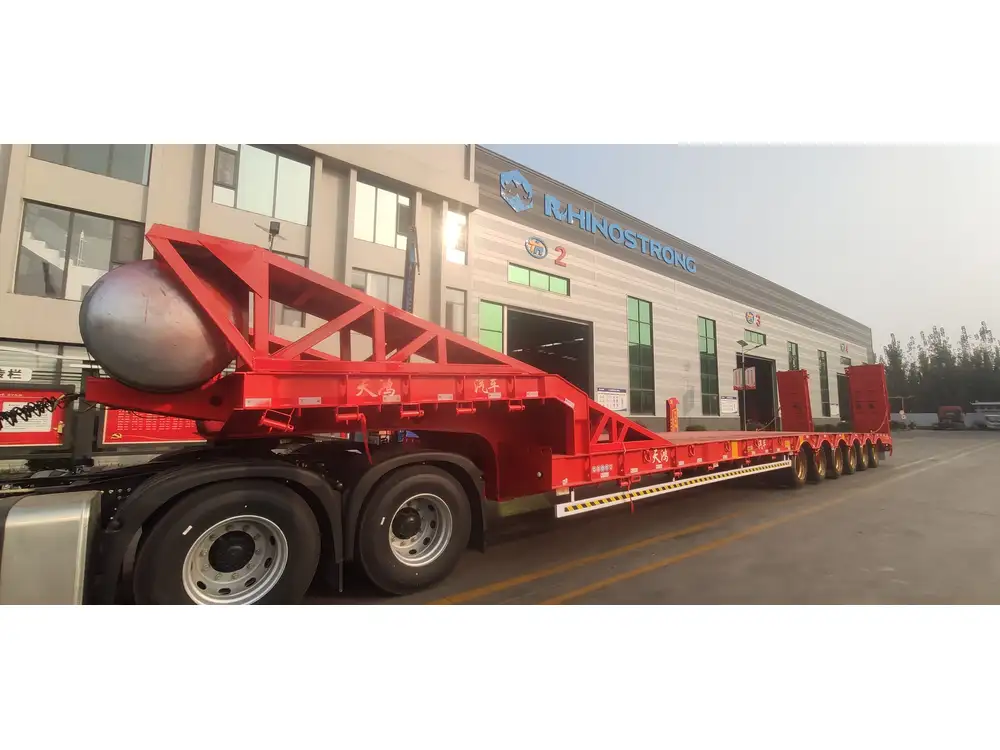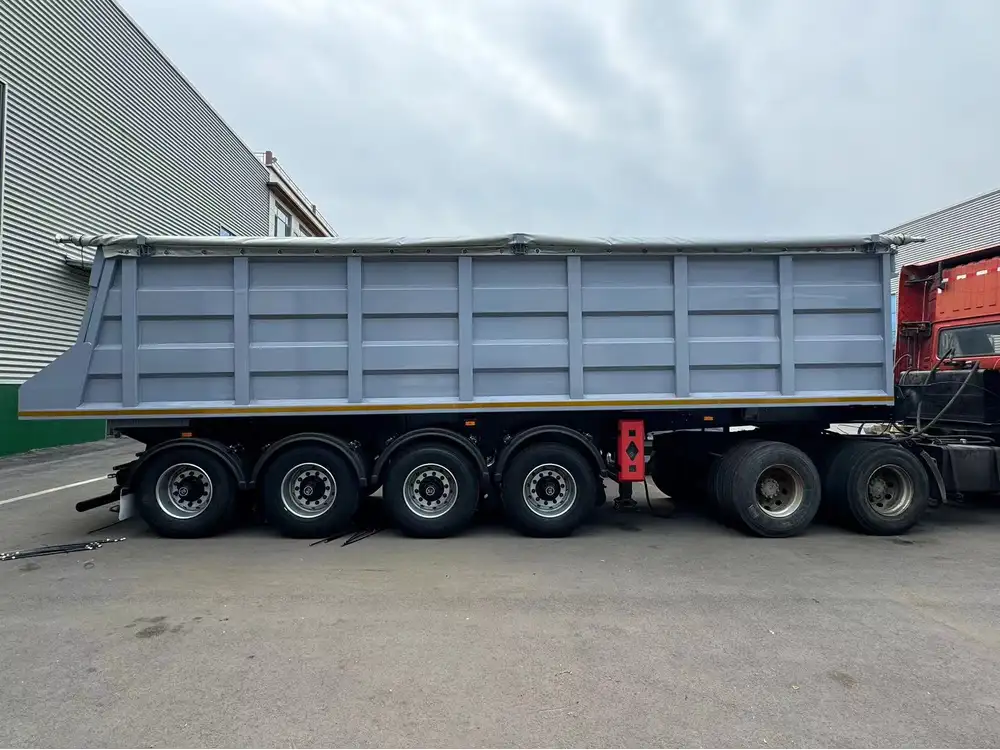In the world of semi-trailers, the ability to manage air suspension systems effectively is crucial for ensuring safety, optimizing load distribution, and enhancing the overall performance of the vehicle. Understanding how to dump air bags on a trailer is essential for drivers, fleet managers, and maintenance personnel who rely on these systems for both operational efficiency and safety.
Understanding Air Bag Suspension Systems
Air bag suspension systems consist of pneumatic springs that can be inflated or deflated to adjust ride height and load capacities. They are instrumental in maintaining optimal tire contact with the road, ensuring smoother rides, and providing better load distribution. However, over time and with heavy usage, air bags may require manual intervention to maintain proper functionality.
The Components of Air Suspension Systems
Air Bags: Flexible rubber bags that inflate to support the trailer’s weight and adjust ride height.
Compressor: A device that pumps air into the suspension system to maintain required air pressure.
Valves: Controls that regulate air flow to and from the air bags, allowing for the inflation and deflation process.
Pressure Gauge: Provides real-time information on the air pressure within the system.

Why Dump Air Bags?
Dumping air bags, or deflating them, can be necessary for several scenarios:
Loading/Unloading: Lowering the trailer can facilitate the process of loading or unloading heavy cargo.
Maintenance: Accessing the suspension for repairs or inspections often requires deflating air bags.
Adjusting Ride Height: Proper ride height is critical for achieving optimal axle alignment and ensuring that the vehicle operates efficiently.
Step-by-Step Guide: How to Dump Air Bags on a Trailer
By following the structured process described below, you can efficiently dump the air bags on your trailer:
Step 1: Safety Precautions
Before proceeding, ensure that you have observed all necessary safety protocols:
Park on a Level Surface: This is crucial to avoid accidental movement while manipulating the air suspension system.
Secure the Trailer: Utilize wheel chocks and engage the trailer brake.
Wear Protective Gear: Gloves and eye protection are recommended to safeguard against unexpected incidents.

Step 2: Locate the Dump Valves
The dump valves are typically located on the suspension system, either near the air bags or on the control panel within the cab of the truck.
- Tip: Consult the trailer’s manual to find precise valve locations, as they may vary by manufacturer.
Step 3: Engage the Dump Valves
To initiate the air bag dumping process, you will need to engage the dump valves:
Manual Dump Valves: If your trailer has manual dump valves, simply pull or turn the valve handle to open it. Watch as the air releases from the bags.
Electronic Dump Control: If equipped with an electronic control module, activate the dump function via the dashboard controls. This feature often provides a faster and more controlled release of air.
Step 4: Monitor the Pressure
Utilize the pressure gauge to monitor the drop in air pressure as you engage the dump valves. The optimal pressure level may vary depending on the trailer’s specifications.
- Note: A complete dump will typically result in very low pressure; however, do not allow it to drop into the negative.

Step 5: Maintain Awareness of Ride Height
As air is released, observe the trailer’s ride height. It’s crucial to achieve an appropriate level to avoid damaging the suspension system or eliminating contact with the surface.
Step 6: Closing the Dump Valves
Once the air bags are sufficiently deflated and the necessary tasks are completed, close the dump valves.
Manual: Turn or push the valve handle back into the closed position.
Electric: Use the dashboard control to return the system to its operational state.
Step 7: Re-inflating the Air Bags
Following the completion of loading or maintenance, it is essential to re-inflate the air bags before driving. This involves:
Activating the Compressor: The compressor should automatically kick in to restore the desired air pressure.
Monitoring Pressure Levels: Keep an eye on the pressure gauge while the compressor operates to ensure it reaches optimal levels.
Inspecting for Leaks: Listen for hissing sounds or visually check for air leaks around the bags or valves.

Troubleshooting Common Issues
Even with the best equipment, challenges may arise. Below are some common problems and their potential solutions:
| Issue | Possible Cause | Solution |
|---|---|---|
| Air leakage | Damaged air bags or faulty valves | Inspect for visible damage and replace parts. |
| Slow release of air | Blockage in the valve or lines | Clean or replace any obstructed components. |
| Compressor not working | Electrical failure or broken compressor | Diagnose electrical connections; replace compressor if needed. |
| Irregular ride height | Unequal air distribution | Check for leaks in individual air bags; recalibrate system if necessary. |
Maintenance Tips for Air Suspension Systems
To ensure the longevity and efficiency of your air suspension system, regular maintenance is key:
Routine Inspections: Perform inspections routinely to check for wear and tear on air bags and fittings.
Check Air Lines: Inspect and replace worn or frayed air lines to prevent leaks.
Clean the Components: Make sure that valves and compressors are free from dirt and debris to function efficiently.
Monitor Pressure Regularly: Keep track of air pressure during operation to identify abnormalities early.
Consult Professionals: Don’t hesitate to seek professional service if you encounter complex problems.
The Importance of Proper Knowledge and Skills
Understanding how to dump air bags on a trailer is not merely a technical skill; it is an integral part of safe trailer operations. Properly managing air suspension can lead to enhanced safety for the driver and other road users. Regularly updating your knowledge and skills in conjunction with manufacturer guidelines can also ensure compliance with industry standards.

Conclusion
Mastering the art of dumping air bags on a trailer requires awareness of the air suspension system’s components and functions. With the right step-by-step approach, troubleshooting skills, and maintenance habits, you ensure dependability and safety in your semi-trailer operations. With this guide, you are equipped not only to perform the task effectively but also to prevent issues that could lead to downtime or accidents. Remember, a well-maintained air suspension system contributes significantly to the efficiency of your fleet and the safety of the roads.



